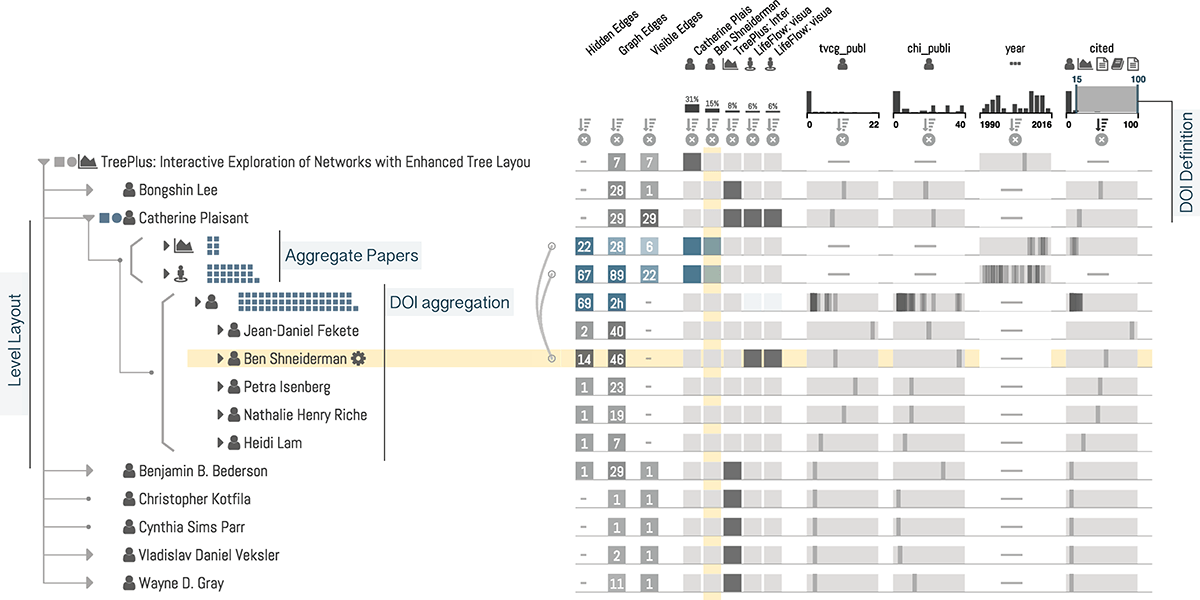
Abstract
Analyzing large, multivariate graphs is an important problem in many domains, yet such graphs are challenging to visualize. In this paper, we introduce a novel, scalable, tree+table multivariate graph visualization technique, which makes many tasks related to multivariate graph analysis easier to achieve. The core principle we follow is to selectively query for nodes or subgraphs of interest and visualize these subgraphs as a spanning tree of the graph. The tree is laid out linearly, which enables us to juxtapose the nodes with a table visualization where diverse attributes can be shown. We also use this table as an adjacency matrix, so that the resulting technique is a hybrid node-link/adjacency matrix technique. We implement this concept in Juniper and complement it with a set of interaction techniques that enable analysts to dynamically grow, restructure, and aggregate the tree, as well as change the layout or show paths between nodes. We demonstrate the utility of our tool in usage scenarios for different multivariate networks: a bipartite network of scholars, papers, and citation metrics and a multitype network of story characters, places, books, etc.
Citation
Carolina Nobre,
Marc
Streit,
Alexander Lex
Juniper: A Tree+Table Approach to Multivariate Graph Visualization
IEEE Transactions on Visualization and Computer Graphics (InfoVis '18),
25(1):
544--554, doi:10.1109/TVCG.2018.2865149, 2018.
BibTeX
@article{2018_infovis_juniper,
title = {Juniper: A Tree+Table Approach to Multivariate Graph Visualization},
author = {Carolina Nobre and Marc Streit and Alexander Lex},
journal = {IEEE Transactions on Visualization and Computer Graphics (InfoVis '18)},
doi = {10.1109/TVCG.2018.2865149},
volume = {25},
number = {1},
pages = {544--554},
year = {2018}
}
Acknowledgements
The authors wish to thank members of the Visualization Design Lab for their feedback, and acknowledge support by NIH (U01 CA198935), NSF (IIS 1751238), DoD (ST1605-16-01), and the Austrian Science Fund (FWF P27975-NBL).

